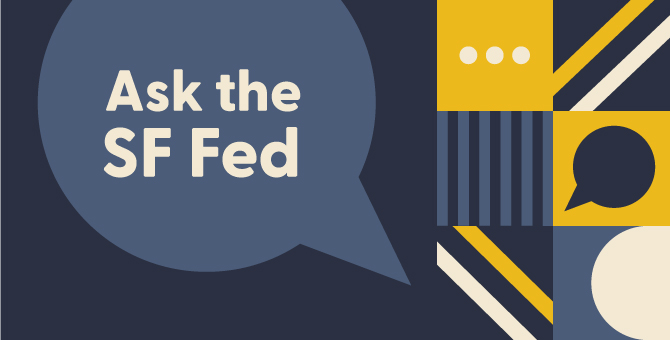Sylvain Leduc, Director of Economic Research, answered a set of pre-submitted questions from the public on inflation and the economy during our Ask the SF Fed event on February 7.
Questions covered concerns over high inflation, price pressures in specific sectors (such as food, energy, and shelter), layoffs in the tech sector, labor market conditions, a possible downturn in the U.S. economy, geopolitical tensions, and the Fed’s ongoing efforts to restore price stability.
One of the key areas Sylvain discussed was the recent shift in U.S. consumer spending patterns and the changing mix of inflation contributors. During the pandemic, people switched to buying more goods while cutting back on services. Now these trends appear to be reversing, with goods consumption moderating and services consumption rising back toward its pre-pandemic trend line.
Sylvain said this suggests the economy may be normalizing. However, services inflation is becoming a more substantial part of overall inflation and is currently much higher than the pre-pandemic levels during the 2000s and 2010s. This is a concern for policymakers because services inflation tends to be a bit more persistent than goods inflation.
Watch our Quick Clips to see Sylvain discuss these topics and others. These short videos and the full replay of the event are available on the SF Fed – YouTube channel and our Ask the SF Fed event page. You can also download a copy of Sylvain’s slides and subscribe to future Ask the SF Fed event notifications.
Stay tuned for our next Ask the SF Fed in the fall of 2023.
Changing Consumption Patterns
Changing Consumption Patterns. February 7, 2023 (video, 01:11 minutes).
Mix of Inflation Contributors Is Changing
Mix of Inflation Contributors Is Changing. February 7, 2023 (video, 00:54 minutes).
Additional Quick Clips
Services Inflation Remains High
Unemployment Is Lowest Since 1960s
You may also be interested in:
The views expressed here do not necessarily reflect the views of the management of the Federal Reserve Bank of San Francisco or of the Board of Governors of the Federal Reserve System.
